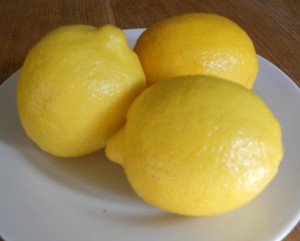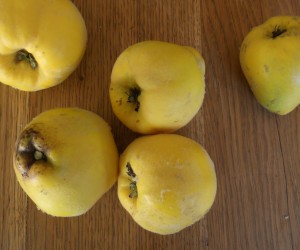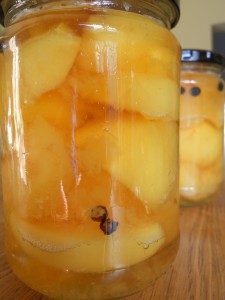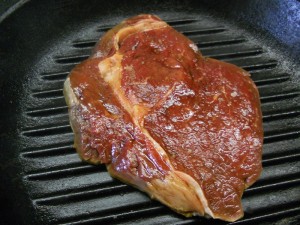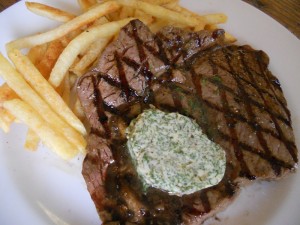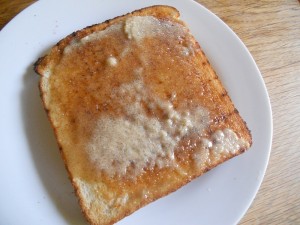
photo: Arthur Turner apples on a tree in my garden.
I like apples, but I love apple trees. As a child I had a favourite climbing tree – it was, of course, a huge apple tree. My sister preferred the pear tree right next to it. We’d scramble up our trees and throw fruit at each other.
As an adult I now just sit around underneath the trees. There’s nothing nicer than a mature apple tree in the garden. Luckily our house has a huge Bramley tree in the garden (it’s no exaggeration to say it was the reason we bought this place). It is bigger than the house, and certainly older. It provides far too many apples. When they’re in season we eat them almost daily, make a years supply of apple sauce, give away as many as we can, and still half the crop falls to the ground.
It’s nice to have such abundance, but variety is also welcome. When we moved here I planted some more trees. Herefordshire Russet, Orleans Reinette, Lords Derby and Lambourne, James Grieve, and Arthur Turner.
The first five are still relatively immature, but the Arthur Turner is a vigorous fast growing tree. After only eight years it is 12ft tall, just as wide, and providing a very good crop. The fruits are huge, a big one can be six inches across.
But all is not well in my little orchard. The Bramley crop this year is awful. The tree looks thin – fewer leaves than normal, the fruit is sparse, small and covered in little black spots. The apples are inedible. Annie was round at her fathers this morning, it seems his Bramley tree is suffering from the exact same thing. I expect they’re both suffering with the odd weather we’ve had this year – it seems more likely that both contracting the same fatal disease at precisely the same time.
So we have, effectively, no crop from one tree (yet still the burden of collecting the hundreds of windfalls for compost). At least I’m happy that the tree isn’t ailing; fingers crossed – it should be okay again next year. Small consolation though when I’m in the Greengrocer’s buying Bramleys again for the first time in ten years.
Apple sauce
Bramley apples cook to a pulp, a smooth puree. They do not keep their shape, as do the Arthur Turner. Apple sauce is a cliché, but why would you buy a jar of the stuff. Even if you have to buy the apples it’ll still be far cheaper, and infinitely better.
Take two Bramley apples – peel, quarter and core them. Cut them into little chunks. Put them in a small saucepan with no more than a splash of water, and two teaspoons of sugar. (This will make a sauce that is considerably less sweet than the commercial product, which is, I think, a good thing.) Set it to gently simmer for fifteen or twenty minutes until the apples have cooked down to a puree. Remember to stir it occasionally, to prevent it from sticking.
Hot apple sauce is just as good as cold with pork chops or sausages or a Sunday roast.
If you are lucky enough to have any left over, it will keep in the fridge for a few days. It’s worth noting that if you want apple sauce for a year, then it must be much sweeter and cooked more like a marmalade or jam to avoid spoilage.
Apple fool
Combine equal quantities of cold homemade apple sauce and gently whipped cream. Once the apples and cream have become one, spoon it carefully into delicate wine glasses. Unbelievably good for something so simple.










